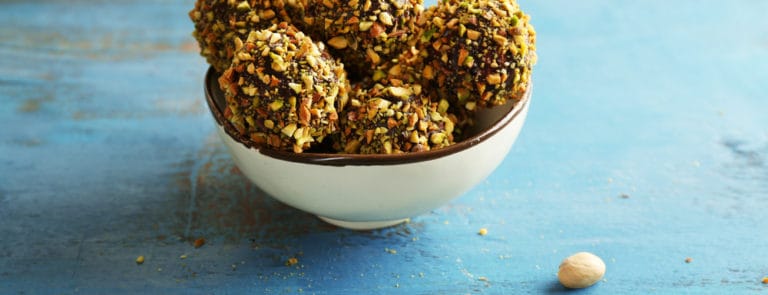10% off £35
Common nutrient deficiencies in children

Expertly reviewed by Sarah Bushell, Registered Dietitian & Children’s Nutritionist
A well-rounded diet plays an important role in the overall health of children. Otherwise, it’s possible that they could develop a nutrient deficiency if one particular nutrient or vitamin is lacking.
In fact, a survey from 2018 found that only 18% of children aged between 5 and 15 ate the recommended five standard portions of fruit and vegetables every day.1
So what sort of nutrient deficiencies can children get when they don’t eat a balanced diet? We’ve listed 7 of the most common, below.
In this article, you’ll find out the signs, causes and treatment for:
What are the most common nutrient deficiencies in kids?
According to multiple studies, the most common nutrient deficiencies in children include:
- Fibre
- Folate
- Iron
- Vitamin D2,3
Dietary fibre is an essential macronutrient found in fruit, vegetables, pulses and grains. Our bodies need fibre to maintain bowel health and to prevent constipation.4
It’s also needed for supporting our immune systems by providing food for friendly probiotic bacteria to feed on and it can prevent excessive weight gain as fibre makes you feel fuller for longer.
Causes of fibre deficiency in kids
The main cause of fibre deficiency in kids is a lack of fruit, vegetables and wholegrains in their diet.
Whole foods tend to be more fibre-rich than commercial ultra-processed foods often aimed at children, which can make it tricky to encourage them to eat fibre-rich alternatives.5
Signs of fibre deficiency in kids
Symptoms of a fibre deficiency in kids include:
- Infrequent bowel movements
- Straining while trying to poo
- Hard or lumpy poos
- A long time on the toilet passing a bowel motion
- Sense of having not finished pooing6
How much fibre do kids need?
The amount of fibre children need is determined by their age:
| Age | Dosage (per day) |
|---|---|
| 2 - 5 years old | 15g |
| 5 - 11 years old | 20g |
| 11 - 16 years old | 25g |
| 16 years+ | 30g |
How to eat more fibre-rich foods
Here are a number of ways you can increase your child’s fibre intake:
- Opt for wholegrain/wholemeal cereals instead of their refined alternatives
- Offer fruit (not dried), nuts and seeds as a snack
- Add vegetables and pulses to sauces and casseroles
- Choose wholemeal bread, brown rice and wholemeal pasta
- Eat the skins on fruit, vegetables and potatoes
Something to remember - if your child doesn't eat much fibre now, it's important to slowly increase their fibre intake rather than go all in, as this allows the digestive system to adapt. At the same time, your child will need to drink plenty of water too.
A folate deficiency is when there is a lack of folic acid (a type of B vitamin needed to make red blood cells) in the blood which puts your child at risk of developing anaemia.7
Causes of folate deficiency in kids
Folate deficiency is rare although most children don’t eat enough folate rich foods, putting them at risk of folate deficiency.
Causes include:
- Not eating enough folate-rich foods which include green leafy vegetables, beans and legumes, fortified breakfast cereals, oranges, wholegrains and poultry, pork, shellfish and liver.
- Coeliac disease or other conditions where malabsorption occurs
- Certain medications, inhibit the absorption of folate, such as those for seizures
- Being born prematurely8
Signs of folate deficiency in kids
The key symptoms of folate deficiency in kids include:
- Pale skin
- Tired, grumpy, a lack of energy
- Low mood
- Sore or tender tongue & mouth ulcers9
How much folate do kids need?
The amount of folate that kids needs vary by age, as they require more as they grow older.10
| Age | Dosage (per day) |
|---|---|
| 1 - 3 years old | 150mcg |
| 4 - 8 years old | 200mcg |
| 9 - 13 years old | 300mcg |
| 14 - 18 years old | 400mcg |
How to raise their folate levels
Fortunately, you can help to raise their folate levels by including the following foods and supplements in their diet:
- Green vegetables including kale, spinach, romaine lettuce, asparagus, Brussels sprouts, broccoli)
- Beans such as chickpeas and blackeye beans
- Peanuts
- Sunflower seeds
- Oranges, orange juices
- Whole grains
- Liver
- Seafood
- Eggs
- Fortified breakfast cereals
- Supplements11
Iron is an essential nutrient that helps the body make red blood cells, much like folate.12
Iron deficiency is the most common one in kids, and left untreated can lead to anaemia.
Iron deficiency in children symptoms
Some of the main causes of iron deficiency in kids include:
- They drink too much cow’s milk and don’t eat enough food
- They had cows milk before the age of 1
- They eat a vegetarian or vegan diet that hasn’t been well planned
- Malabsorption (like with coeliac disease)
- A loss of blood13
Signs of iron deficiency in kids
Initially and if mild, children may not show any symptoms. However, some of the key signs of iron deficiency anaemia include:
- Looking pale
- Moody behaviour
- Tiredness
- Get tired quickly from exercise
- Feeling dizzy or lightheaded
- A fast heartbeat
- Developmental delays and behavioural problems
- Unable to concentrate
- Wanting to eat ice or non-food items (this is known as pica) is sometimes seen in children with iron deficiency although the reason is not clear. It could be coincidental.14
How much iron are kids recommended?
Again, the amount of iron kids need varies by age as the recommended dosage varies as they grow up.15
| Age | Dosage (per day) |
|---|---|
| 1 - 3 years old | 6.9mg |
| 4 - 6 years old | 6.1mg |
| 7 - 10 years old | 8.7mg |
| 11 - 18 years old (girls) | 14.8mg |
| 11 - 18 years old (boys) | 11.3mg |
How to raise their iron levels
Thankfully, a healthy balanced diet will supply the number of iron children need but if they won't eat certain foods there are supplements you can provide your child with to up their iron levels.
These include:
- Iron-fortified breakfast cereals
- Lean red meat, liver, dark poultry meat, oily fish and prawns
- Tofu
- Egg yolks
- Beans and lentils
- Dried fruits like raisins and apricots (not as a snack due to dental caries)
- Green leafy vegetables like spinach
- Iron from non-animal sources isn't easily absorbed in the body and so serving fruits or fruit juice alongside these food helps iron absorption.
- Iron supplements – taken exactly as prescribed because iron in supplement form can cause digestive problems like stomach aches, diarrhoea or constipation.16
Vitamin D is an essential component of your kids’ diet, as it helps with their bone and muscle health.17
However, a large number of children, and adults, have a deficiency in it.
Causes of vitamin D deficiency in kids
There are a number of different potential causes of vitamin D deficiency in kids including:
- Low or no sun exposure
- Having a dark skin pigmentation
- Malabsorption disorder18
Signs of vitamin D deficiency in children
Vitamin D deficiency often goes under the radar as there aren’t many signs of a deficiency until levels are very low. Some of these signs include:
- In babies – seizures, poor growth, irritability and tiredness
- Young children – irritability, slow growth, muscle pain, sometimes not meeting developmental milestones
- Teenagers – pain in the back of their calves, back and thighs, bone tenderness, tiredness and irritability19
How much vitamin D do kids need?
The recommended children’s dosage for vitamin D is as follows:20
| Age | Dosage (per day) |
|---|---|
| 0 - 1 years old | 8.5-10µg |
| 1 - 4 years old | 10µg |
| 5 - 18 years old | 10ug between October and March |
How to raise their vitamin D levels
Unlike other common nutrient deficiencies in kids, the only way to safely increase their vitamin D levels are through supplements.
Some foods are fortified with vitamin D (some breakfast cereals and milk) but these won't safely provide enough. It’s perfectly safe to have fortified foods alongside a supplement.
The final say
We hope you’re feeling more informed on the most common nutrient deficiencies in kids after reading our guide. For more information on keeping your kids healthy, we have a wide range of helpful articles in our Children’s Health section on the Health Hub
The advice in this article is for information only and should not replace medical care. Please check with your GP or healthcare professional before trying any supplements, treatments or remedies. Food supplements must not be used as a substitute for a varied and balanced diet and a healthy lifestyle.
Last updated: 22 June 2022
- http://healthsurvey.hscic.gov.uk/data-visualisation/data-visualisation/explore-the-trends/fruit-vegetables.aspx
- https://www.ncbi.nlm.nih.gov/pmc/articles/PMC4023304/
- https://www.swbh.nhs.uk/wp-content/uploads/2012/07/How-to-increase-the-fibre-in-your-diet-ML3357.pdf
- https://jamanetwork.com/journals/jama/article-abstract/2782880
- https://www.ncbi.nlm.nih.gov/pmc/articles/PMC3262613/
- https://www.stanfordchildrens.org/en/topic/default?id=folate-deficiency-anemia-85-P00089
- https://www.stanfordchildrens.org/en/topic/default?id=folate-deficiency-anemia-85-P00089
- https://ods.od.nih.gov/factsheets/Folate-Consumer/
- https://ods.od.nih.gov/factsheets/Folate-Consumer/
- https://www.thh.nhs.uk/documents/_Patients/PatientLeaflets/paediatrics/PIID426_A_diet_high_in_iron_for_children.pdf
- https://kidshealth.org/en/parents/ida.html
- https://kidshealth.org/en/parents/ida.html
- https://kidshealth.org/en/parents/iron.html
- https://kidshealth.org/en/parents/ida.html
- https://cks.nice.org.uk/topics/vitamin-d-deficiency-in-children/
- https://www.nuh.nhs.uk/vitamin-d-deficiency-in-children/
- https://www.nuh.nhs.uk/vitamin-d-deficiency-in-children/














